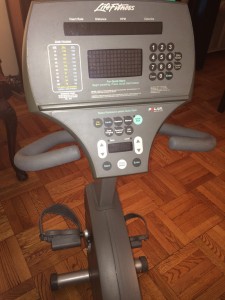In the fall of 1982, I entered law school, and moved into an apartment in Brooklyn Heights, located right on the Promenade. It was a great place to run, and I started to run for exercise. Up to that point, when I was training for the various sports that I had played over the years, the longest I had ever run was 2 miles, and most of my running was sprints. When I started running in Brooklyn Heights, I was running around 1- 2 miles every few days, until a fateful Sunday in the fall. That day, I went out for a run in my Nike Waffle Trainers, full top and bottom sweats, no socks, a Walkman, and no money. I was feeling a bit more adventurous that day, so I deviated a bit from my normal route, and ended up intersecting with the NYC Marathon, at the 8 mile mark.
It was a beautiful day, so I thought why not run a bit with the Marathon runners, and then I will go back to my Brooklyn Heights apartment, but since I was not an official entrant, I ran on the sidewalk. Everything was going well, until I got lost, and had no idea how to get back to Brooklyn Heights, but I had a brilliant idea, I knew how to get back to my apartment from Central Park, so I figured I would run to Central Park, and then go back to my apartment from there. To make a long story short, I ended up running/walking the last 18.2 miles of the race, and crossed the finish line with the other runners — however, I did not accept official medal being handed out, but I did take a bottle of Perrier, and a space blanket, both of which I still have to this day. I could not find a cab around Central Park, so I walked to the Empire State Building (about a mile from Central Park), got in a cab, did not tell the cab driver I had no money, and when I got to my apartment, got him his money and gave him a good tip.
For the next week, I could not walk down any stairs, and that day, I thought my sneakers were going to be completely bludgeoned, but fortunately they were not, however, my feet were completely blistered. But from that experience came a dream — if I could run 18.2 miles with no training, and never having ever run more than 2 miles in my entire life, then if I trained, I should be able to run a full marathon of 26.2 miles. That is exactly what I did for the next year, and in 1983 I completed the NYC Marathon in around 4 hours.
So why mention that story with the title, “Lesson Learned”, and with a picture of a knee in distress. Well, after running the Marathon, I suffered an injury to my left knee, and it became painful to run, so I stopped. As any runner will tell you, particularly if you are running in an urban area, your body takes a pounding, and injuries are to be expected. Compounding the injury is the fact that when I was running, I was consuming a huge amount of food each day, which I burned off through running, but when I stopped, the pounds piled on. That, combined with the crazy hours of a first and second year law associate, caused my weight to balloon — eventually, many years later, in 2008, I reached my highest weight, which was in the 460’s.
Now let’s move the present day. When I started my weight loss campaign, I wanted to make sure that the cardiovascular exercise I chose could be done every day in good or bad weather, and was easy on my joints, hence, the recumbent bike, and I later added the elliptical. In the last few years, I also added a long (8 mile) walk/run on Sunday’s, which was primarily a walk, with a 1/4 mile run thrown in . In addition, I would run in the New Year’s Eve 4-mile run in Central Park, and the Gridiron Classic, on Superbowl Sunday. The past few months, I have been having issues with my left leg, including Achilles issues, and swelling of my left knee, so I have been cutting out the Sunday walk/run.
As it turns out, the swelling is due to arthritis in my left knee, and if that was still my primary exercise, I would again be stuck of not having a daily go to exercise. However, this time around, I learned my lesson, so I can continue to exercise on the bike and elliptical even with my arthritis issue, and in fact, that is a good treatment for that condition. Lesson learned, and I would suggest, for anyone wanting to incorporate exercise into their daily routine, for weight loss or maintenance, they stick with a low-impact exercise like a bike or an elliptical, and stay away from running outdoors, or being on a treadmill. If you still want to run, then I would suggest also doing a low-impact exercise, this way, if your physical condition makes it difficult to run, you might still be able to do the low-impact exercise.




